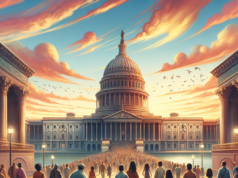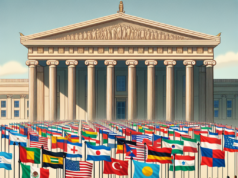
The 4 Biggest Challenges of Immigration Law Reform
Immigration law reform has been a topic of significant debate in recent years, both in the United States and in several other countries across the world. The issue is multifaceted and complex, with significant social, economic, and political implications. Despite the pressing need for reform, however, progress has been slow, and several challenges have emerged that must be addressed before significant progress can be made. In this article, we will explore the four biggest challenges of immigration law reform, and the ways in which they can be tackled.
1. Political Polarization
Political polarization is one of the most significant challenges facing immigration law reform today. In recent years, the issue has become increasingly politicized, with both sides of the spectrum taking hardline positions on the issue. Republicans tend to advocate for tighter border control and stricter immigration policies, while Democrats tend to be more lenient and support greater openness to those seeking asylum or refugee status.
This polarization has resulted in a lack of bipartisan cooperation, making it difficult for lawmakers to agree on any meaningful changes to immigration policy. Furthermore, it has given rise to a widespread belief among many people that immigration is a zero-sum game, where benefits for one group must come at the expense of others. This belief contributes to a divisive and unwilling approach to policy decisions.
To address this challenge, there needs to be a greater effort to bridge the partisan divide. Politicians must work together to find common ground, and reach a consensus that will benefit everyone. The key to achieving this is finding ways to shift the narrative around immigration from one of hostility and fear to one of acceptance and compassion.
2. Complex Legal Framework
The United States’ legal framework for immigration is one of the most complicated in the world. It is made up of numerous statutes, administrative rules, executive orders, and court decisions, all of which can be confusing and challenging to navigate. This complexity is compounded by the fact that the relevant law is spread across multiple government agencies, each with different requirements and procedures.
This complexity makes it challenging for immigrants to navigate the system and frustrating for policymakers trying to make sense of the situation. It can also result in inconsistent and conflicting policies and decisions, leading to legal challenges which can further slow the process of immigration reform.
To address this challenge, there needs to be a simplification of the legal framework, with clearer guidelines and procedures that are consistent across agencies. A one-stop website or office that can provide clear information about immigration processes and requirements would also be of great benefit.
3. Backlog of Cases
Immigration law reform is further hindered by the backlog of cases waiting to be processed by immigration courts and other agencies. The backlog means that many immigrants are waiting for years for decisions on their cases, leaving them in limbo, unsure of their legal status. It also creates a bottleneck that hampers the efforts of those trying to overhaul the immigration system.
The backlog is a result of several factors, including a lack of resources, understaffed and overworked immigration courts, and the complicated legal framework. The vast amount of paperwork and documentation required for immigration cases can also contribute to delays, as can the complexity of the legal issues involved.
To address this challenge, there needs to be greater resources and staffing for immigration courts and other agencies. Legal reform could play a significant role in simplifying the legal framework and streamlining the process to reduce the administrative burden and wait time.
4. Public Perception
Public perception is perhaps the most significant and challenging of all the challenges facing immigration law reform. Negative perceptions of immigrants and refugees can lead to a lack of political will for reform, making it difficult to enact meaningful changes. Media narratives that paint immigrants as dangerous criminals or freeloaders burdening the system can also contribute to negative perceptions.
Negative perceptions can arise from several sources, including media coverage, political rhetoric, and public ignorance or misunderstanding. It can also be a result of real or perceived economic and social pressures, like job insecurity or crime rates, which create feelings of hostility towards immigrants.
To address this challenge, there needs to be a concerted effort to shift public perceptions of immigrants and refugees towards more positive and empathetic views. Education and outreach programs that draw on personal stories of immigrants and their contributions to society can be an effective way to generate support for immigration reform. Additionally, campaigning politicians and other public figures should focus more on humanizing immigrants and their experiences, rather than relying on stereotypes and scare tactics.
Conclusion
Immigration law reform is an urgent and complex issue that requires solutions, rather than political posturing. Addressing the challenges involved will require cooperation from both sides of the political spectrum, a simplified legal framework, additional resources for immigration agencies and courts, and a shift in public perceptions of immigrants and refugees. With these challenges addressed, the United States and other nations can take steps towards a more efficient and just system of immigration that benefits everyone.
1. Border security – A critical component of any piece of immigration reform law will be the funds and approaches devoted to securing our nation’s DemocratsRepublicans
2. Cracking down on employers of illegal immigrants – There is considerable incentive for immigrants to disregard border laws if they can secure employment on American soil without having to endure cumbersome, costly legal means. Frequently, these aliens will not even possess a specific skill or trade when seeking employment. There is some debate on this issue, as proponents of a more Draconian immigration reform law would have undocumented denizens more swiftly
3. Provide a path to citizenship – This is probably the most hotly-contested of all the parts of stated presidential immigrant reform agendas. A number of Americans support a route to new immigration law that goes through a system of amnesty for current illegals. Perhaps getting off with a slap on the wrist in the form of a fine and being sent to the back of the line of the immigration process, illegals under this plan could still see themselves as
4. Maintain a good working relationship with Mexico – The idea under for making improvements in Mexico is to make illegal entry into the U.S. less appealing; ideally, any new immigration law would be buttressed by Mexico’s agreement to do their part to help themselves economically.

























